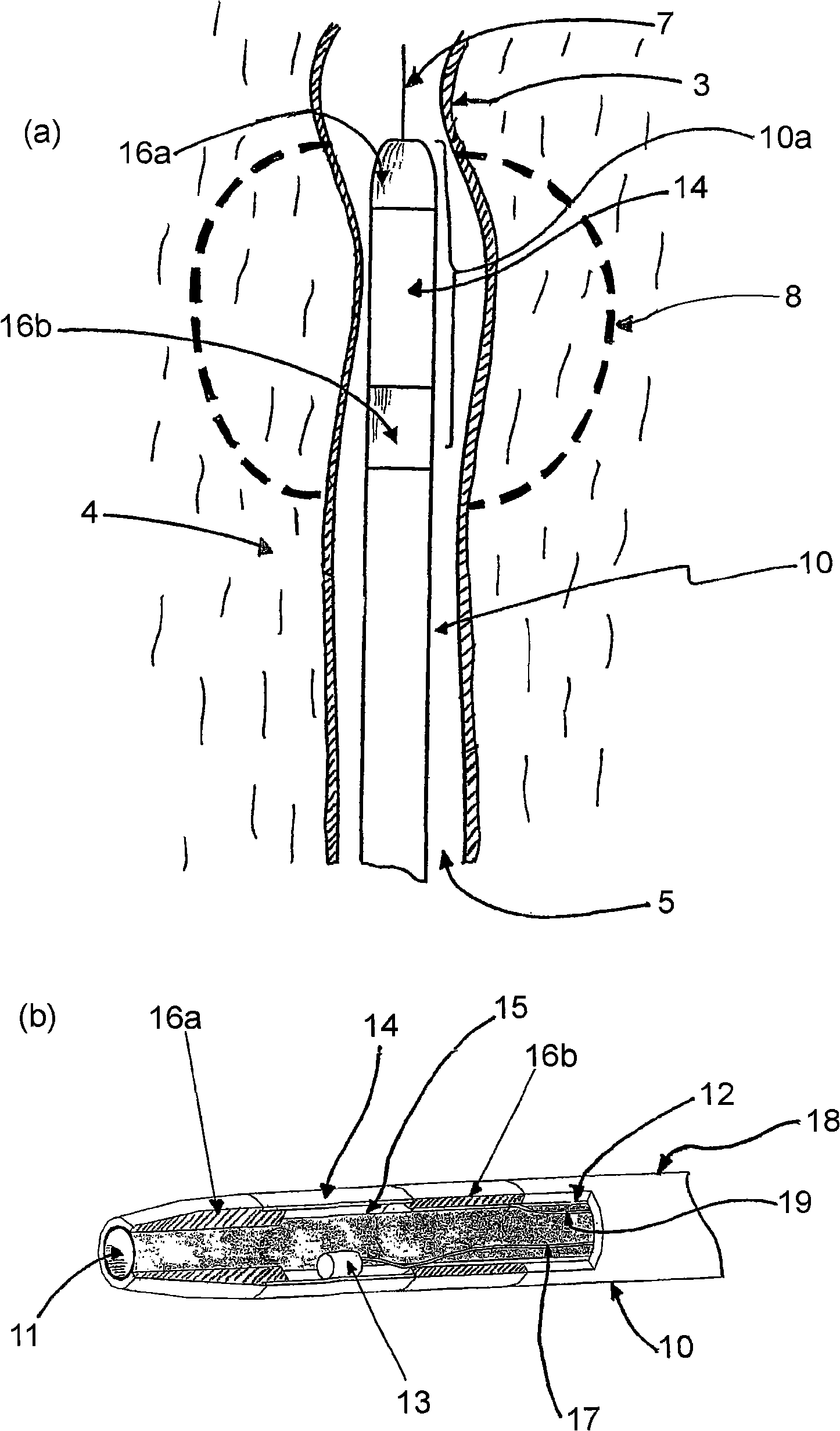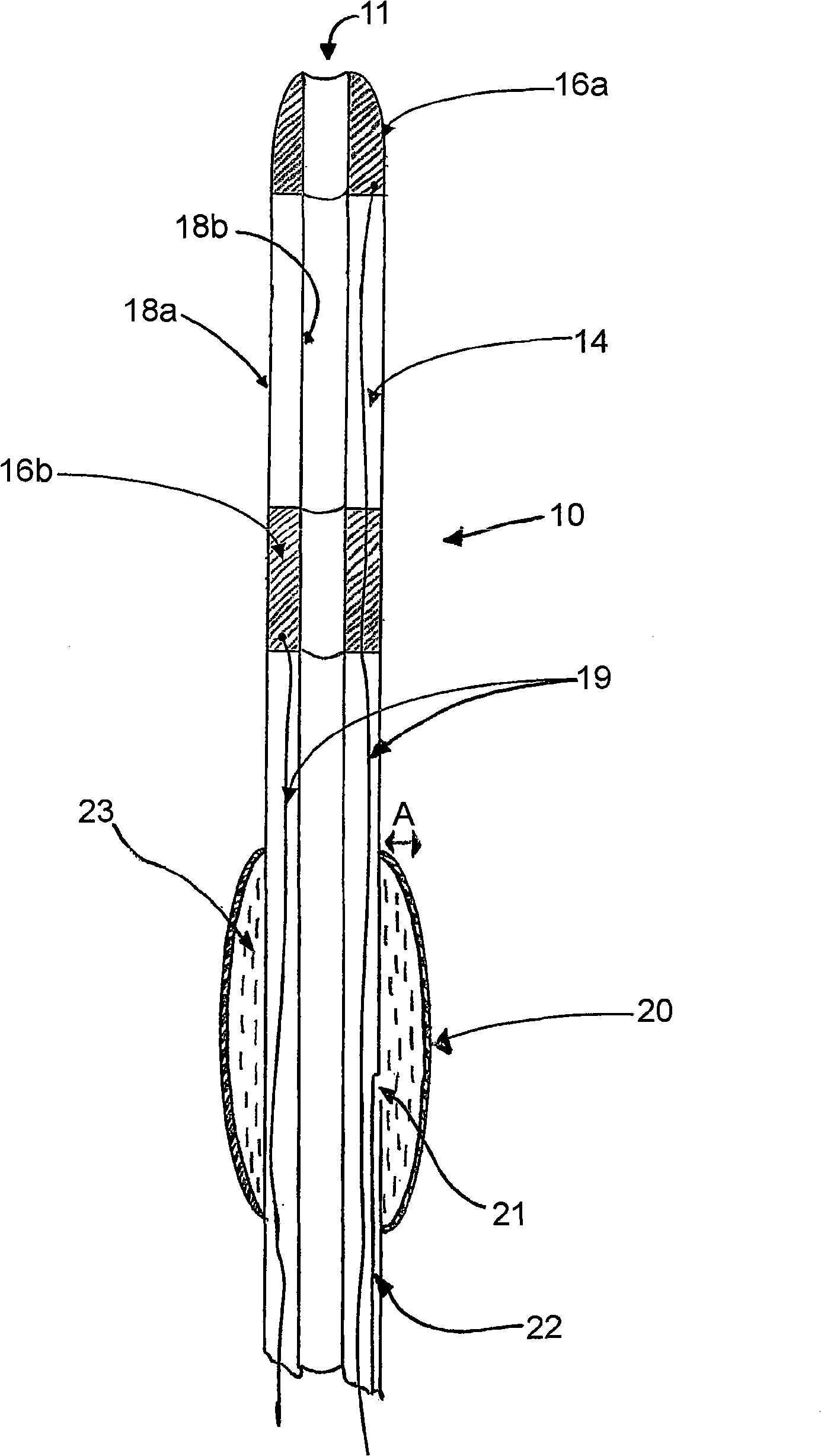Vessel sealing device and methods
A vascular, central tube technique used in the field of closing the lumen of hollow anatomical structures such as blood vessels
- Summary
- Abstract
- Description
- Claims
- Application Information
AI Technical Summary
Problems solved by technology
Method used
Image
Examples
example 1
[0091] The device was connected to the generator via an adapter cable and used between 1-40W in watts, the minimum power wattage was determined by various applications of the catheter in bovine liver tissue. This can be determined as 5 watts.
[0092] The catheter was introduced into the liver tissue; the RF generator was set to 5 watts and power was applied. A timer was started to record the time it took for the impedance reading to increase by 10% above baseline, which was considered sufficient to coagulate tissue. When the impedance rating is reached, the RF generator is placed in standby mode. Coagulated tissue was excised and the area of tissue coagulated was measured. The catheter was repositioned and the procedure was repeated ten times. The results showed a continuous heating zone around the electrodes with no blind spots.
[0093] The results are described in the table below:
[0094] Table 1
[0095] experiment
[0096] 4
example 2
[0098] Variation of distance between electrodes: Figure 20 (a) shows the pattern of tissue coagulation obtained with two variants of the bipolar configuration of the catheter tip in bovine liver tissue. It can be seen that at 5 watts of RF energy, with a distance of 10 mm between the proximal and distal electrodes, separation and distinct ablation points are obtained. At a distance of 7 mm between the electrodes (again 5 watts), the ablation points converge to give a single elongated ablation zone. Figure 20 (b) in (b) shows the result of a monopolar configuration where the conduit in which the electrodes are mounted is supplemented by a remote grounding pad. The extended ablation zone is shown by arrow G.
PUM
| Property | Measurement | Unit |
|---|---|---|
| Length | aaaaa | aaaaa |
| Length | aaaaa | aaaaa |
Abstract
Description
Claims
Application Information
 Login to View More
Login to View More - R&D
- Intellectual Property
- Life Sciences
- Materials
- Tech Scout
- Unparalleled Data Quality
- Higher Quality Content
- 60% Fewer Hallucinations
Browse by: Latest US Patents, China's latest patents, Technical Efficacy Thesaurus, Application Domain, Technology Topic, Popular Technical Reports.
© 2025 PatSnap. All rights reserved.Legal|Privacy policy|Modern Slavery Act Transparency Statement|Sitemap|About US| Contact US: help@patsnap.com



